Welcome to a comprehensive tactical analysis of Liverpool under the astute guidance of Jürgen Klopp. In this exploration, we delve into the intricacies of Klopp’s tactical philosophy, dissecting the formations, player roles, and strategic nuances that have propelled Liverpool to the forefront of English and European football. Klopp’s tenure at Liverpool has been marked by dynamic attacking football, high pressing, and relentless intensity, making them one of the most formidable teams in world football. Join us as we unravel the tactical intricacies behind Klopp’s managerial brilliance and examine how his tactical acumen has shaped Liverpool’s success on the pitch.
Build-up
Low Build-up
In the low build-up, Jürgen Klopp sets his team up in a 1-4-3-3 formation, with one number six and two number eights.

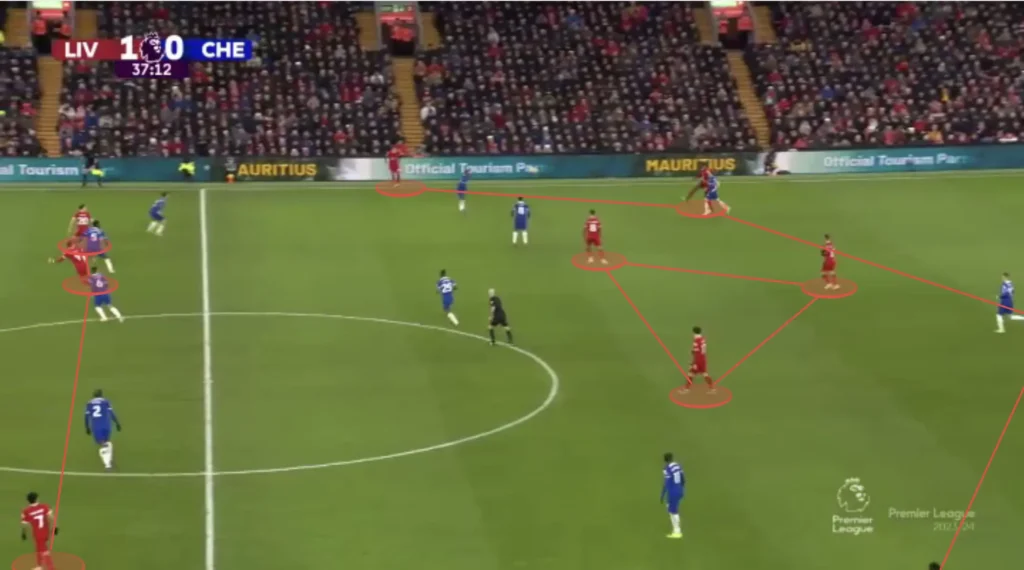
Liverpool often use fast and vertical long balls in their low build-up. Therefore, they position their attackers centrally, giving them a higher chance of winning the first and second balls.
High Build-up
In the high build-up, Jürgen Klopp’s Liverpool set up in a 1-2-2-5-1 formation, usually pushing one fullback up as a winger and one inside as a holding midfielder:
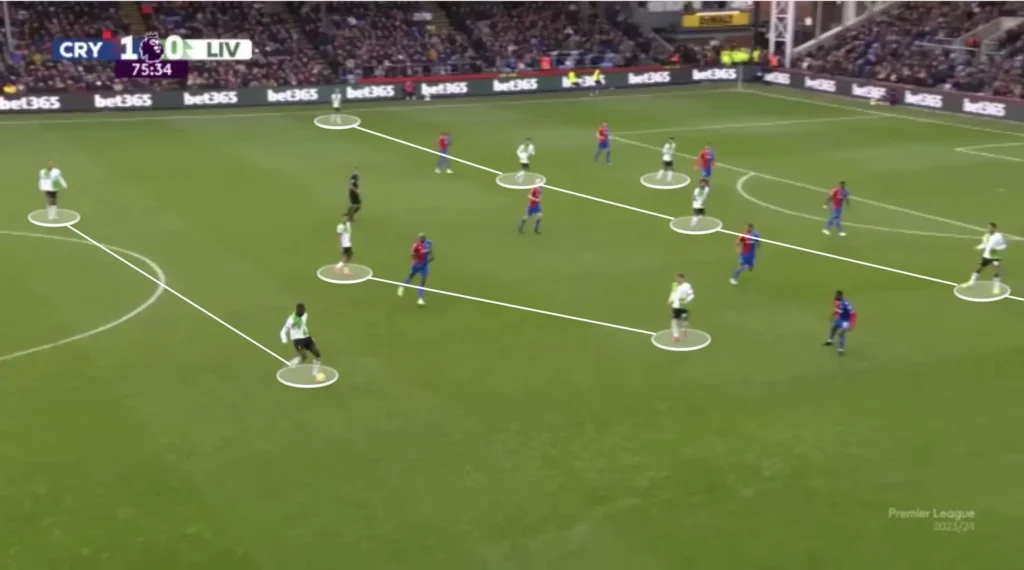
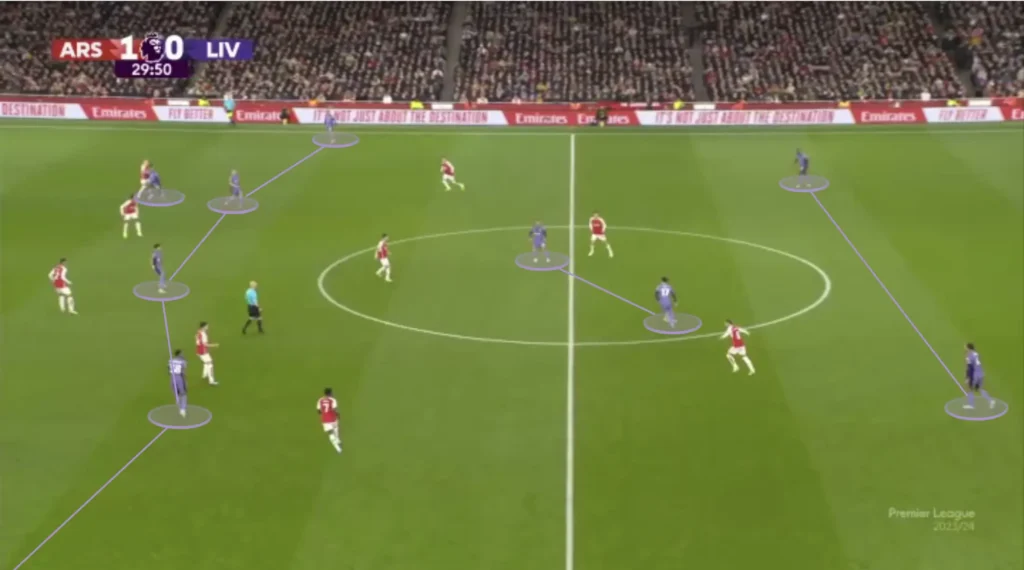
Inverted Fullback
Jürgen Klopp uses a four-back in defense but a two or three-back in attack, which means that one fullback needs to push up as a winger while the other inverts into the midfield during the build-up. This creates more options in the center and less space between the players. Klopp likes this because he prioritizes playing through the middle. He needs one player high and wide to pull apart the backline while the rest create numerical advantages in the midfield areas. This builds good conditions in defensive transitions, allowing more players to press when they lose the ball. Another purpose for keeping many players in the middle is to shorten the distance between them. This shortens the length of the passes, which naturally shortens the time between passes. This means the opposition players will have less time to push up and press, giving the Liverpool players more time and control.
Trent Alexander-Arnold has frequently been used as this inverting player and is usually a fullback in defense and a holding midfielder in attack. Klopp has also used Joe Gomez in this role, while players like Andrew Robertson and Connor Bradley have been used as the fullback who pushes up as a winger.
High Backline
A massive aspect of Liverpool’s high build-up is they keep a high backline. This helps in the counterpress because they get closer to the center. Having more players close to the center who can win the ball back makes it difficult for the opposition to recycle possession. Furthermore, the high backline shortens the distance between players, shortening the time and length of the passes and preventing the opposition from pushing up their defense.
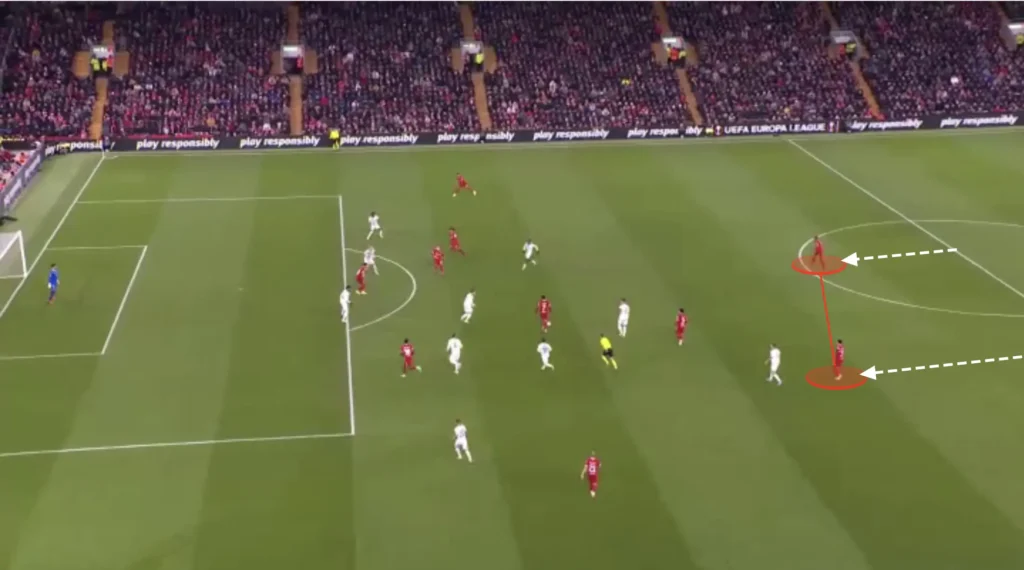
Changing Formation
Liverpool, however, often rotates in their build-up, creating new formations to confuse opponents. They also adapt to their opponent’s formation to create numerical advantages in different areas, allowing them to beat the defense and score more goals. Their most frequent formation change is to drop one of the holding midfielders into the backline, creating a 1-3-1-5-1 formation. Liverpool often do this when playing against two forwards. Creating a 3v2 with the backline against the opposition’s forwards, instead of a 2v2, means that one center-back will be free, allowing them to beat the opposition’s forward line.
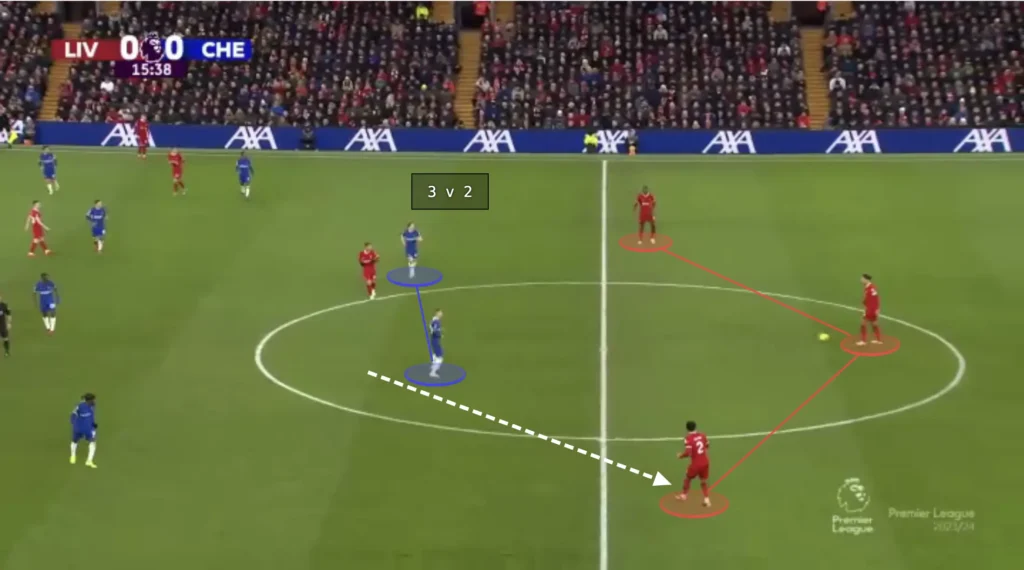
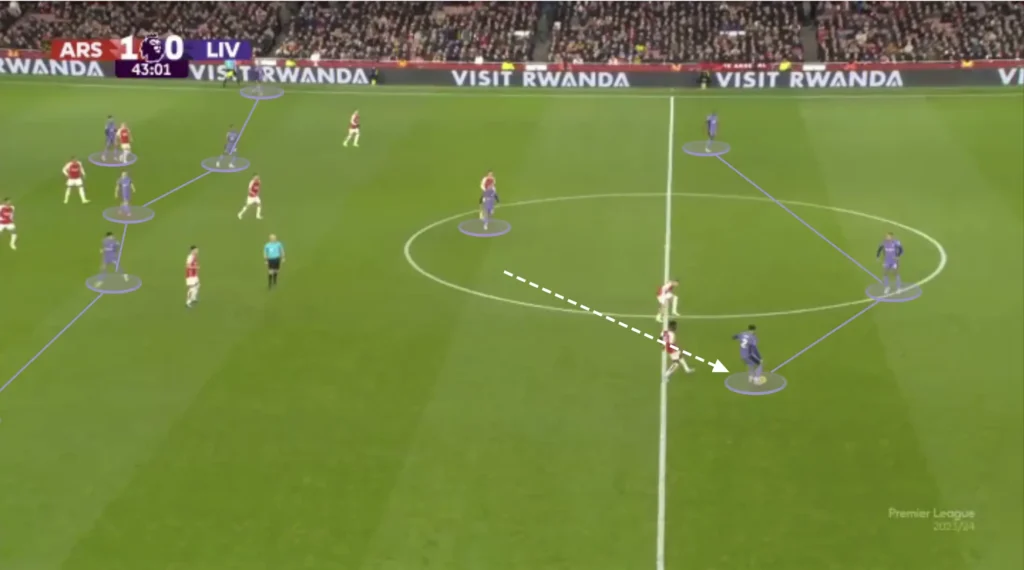
Using the Goalkeeper
Liverpool will also create a back-three by pushing the goalkeeper up between the center-backs. This produces the same numerical superiority against the first line of teams who defend with two forwards. The advantage of this, however, is it creates the same numerical superiority without losing the extra midfielder, allowing Liverpool to keep more players higher up the pitch.
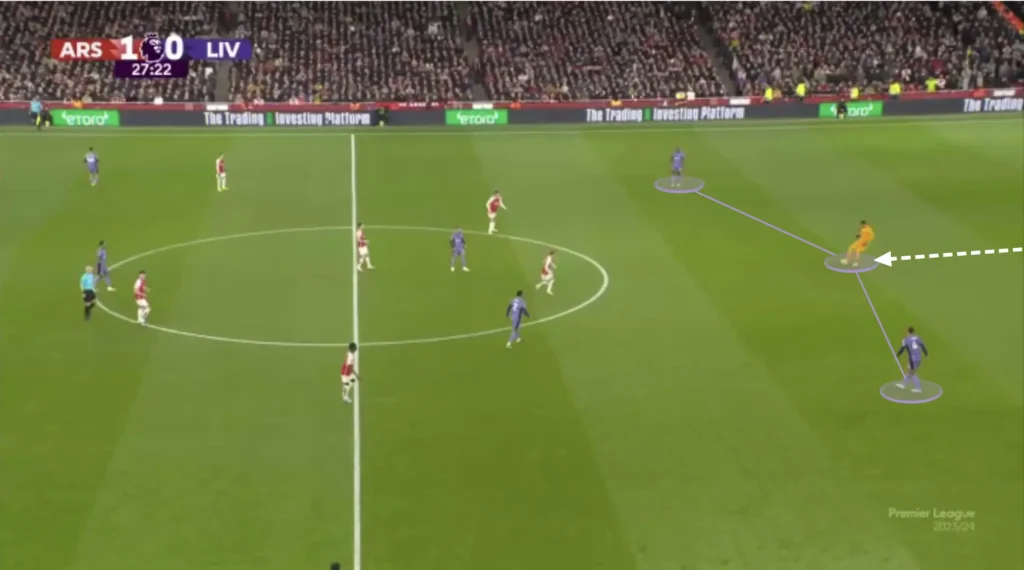
Finding the Pockets
Another aspect of Liverpool’s vertical build-up is always trying to find the attacking midfielders in the pockets. Their midfield numerical superiority usually means at least one will be open. They will look for diagonal passes from the back or the wing, breaking lines and finding an attacking midfielder who can turn and drive at the defense.
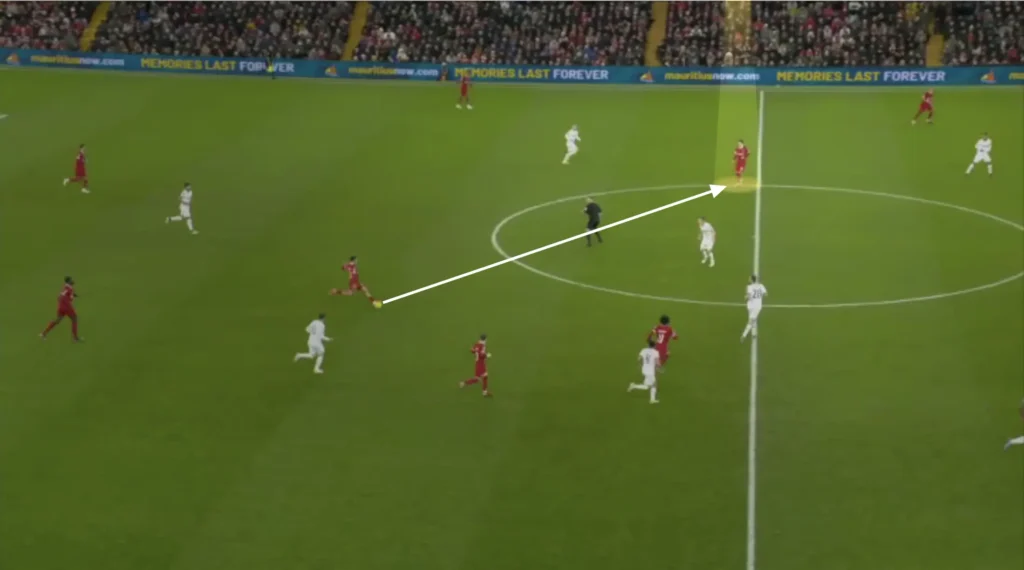
Balls in Behind
Liverpool are very confident in their high press and know they can press the opposition to win the ball back if they lose it. They, therefore, do not shy away from using the early through-ball in behind the opposition’s backline. This constant threat prevents the opposition from playing with a high backline and closing the space between the lines. Instead, they have to drop the backline and protect the space in behind, opening the space in the middle for the Liverpool midfielders to exploit.
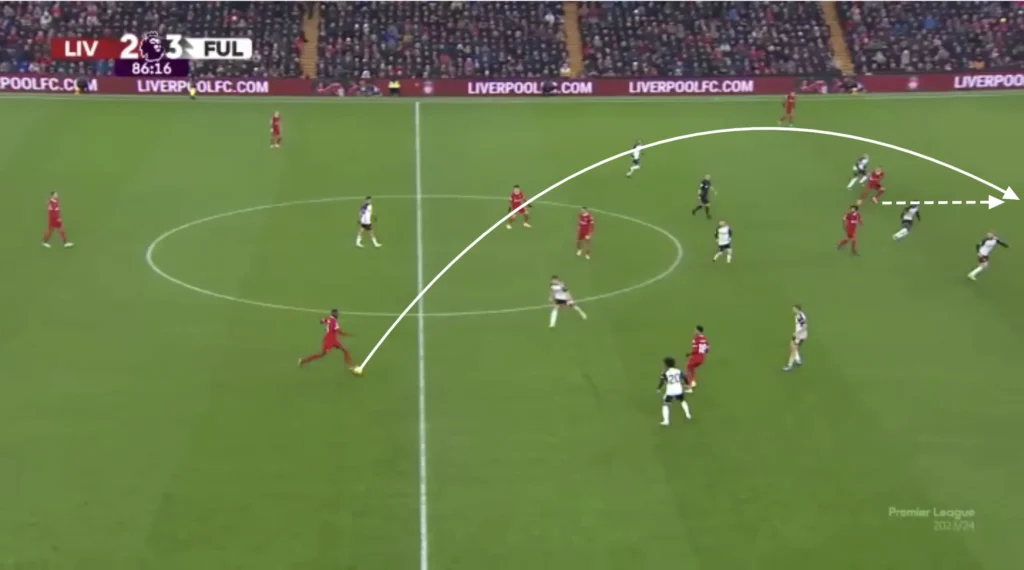
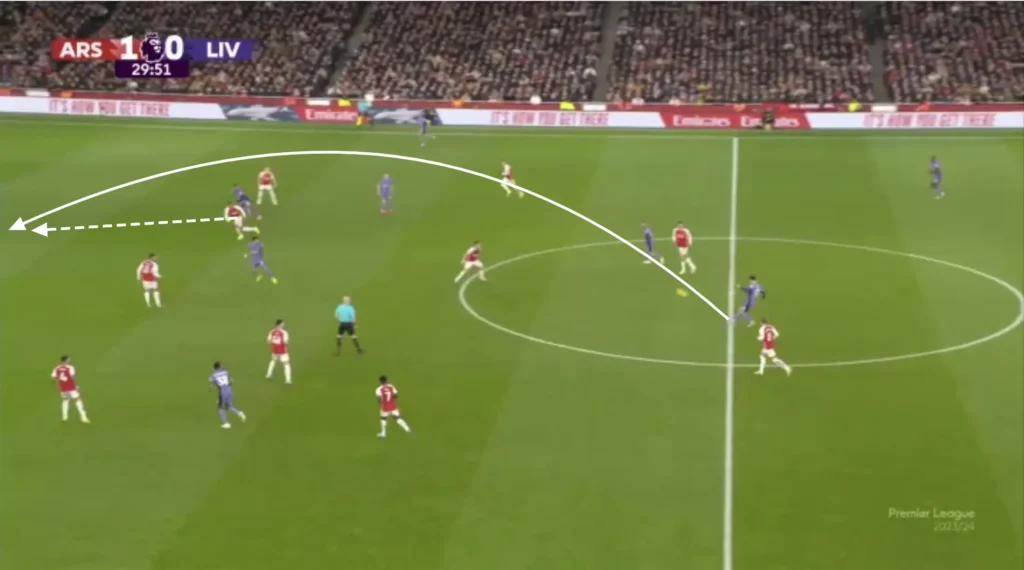
Numerical Advantages
Another massive aspect of Liverpool’s high build-up is their ability to create numerical advantages against the opposition’s defensive line. Their six attacking players naturally become numerically superior against the opposition backline, which they are great at taking advantage of.
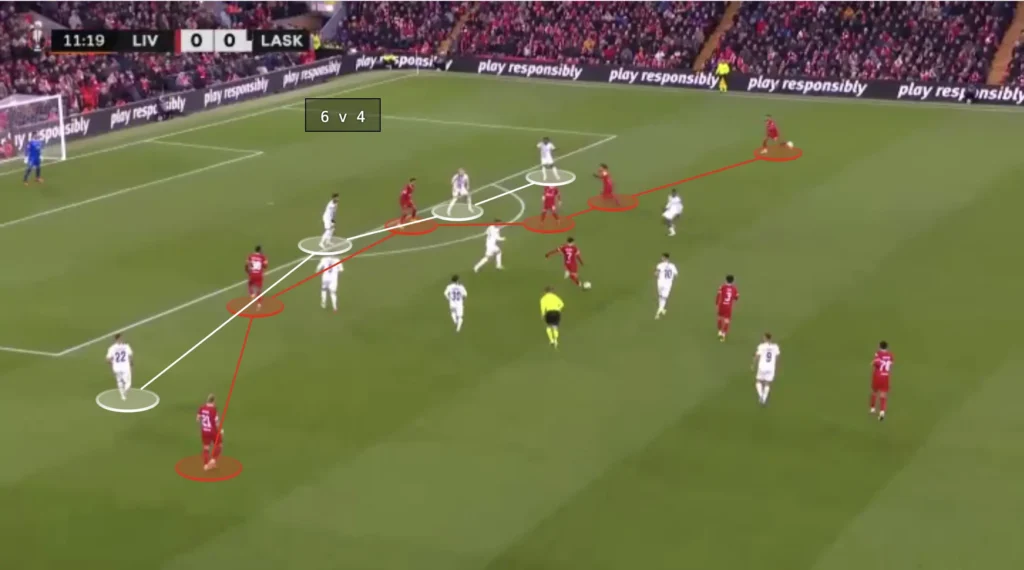
When the defending team is positioned on one side, the weak-side fullback becomes vulnerable to the switch of play due to the 1v2 against Liverpool’s winger and attacking midfielder. Jürgen Klopp’s team often capitalizes on this by getting the ball to the winger and creating many opportunities from 2v1 situations on the wing and in the half-spaces. Here, the left-back is pinned by an attacking midfielder, which gives the winger space on the outside.
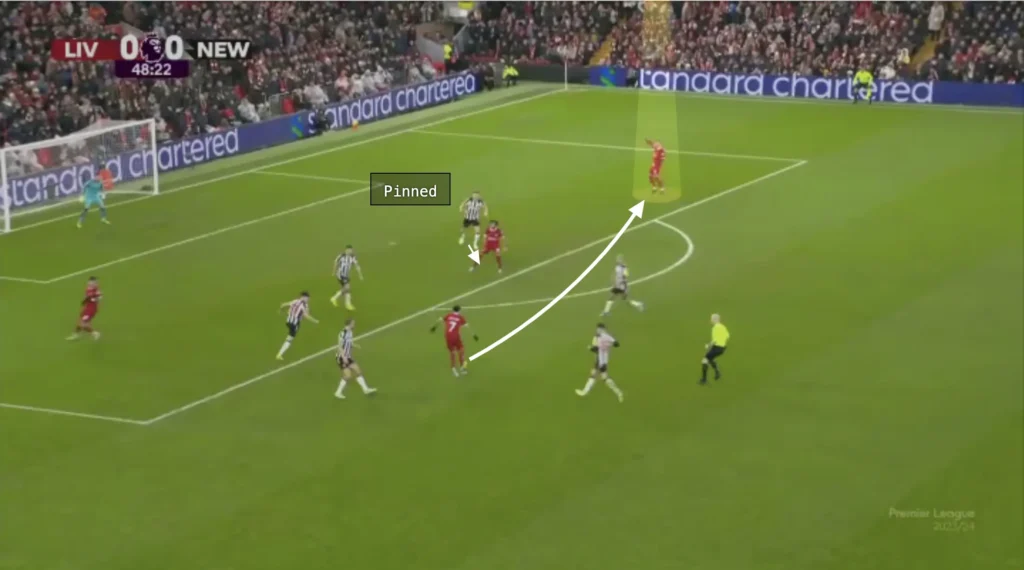
Final Third
Attacking the Half-Space
Liverpool is an excellent team in the final third. They will always create many chances, mainly by attacking the space between the opposition center-back and fullback.
One way they do this is by using an underlap. Liverpool often find space for their wingers after switching the play with a long ball. The winger will then attack his fullback, waiting for the underlapping run from an attacking midfielder.
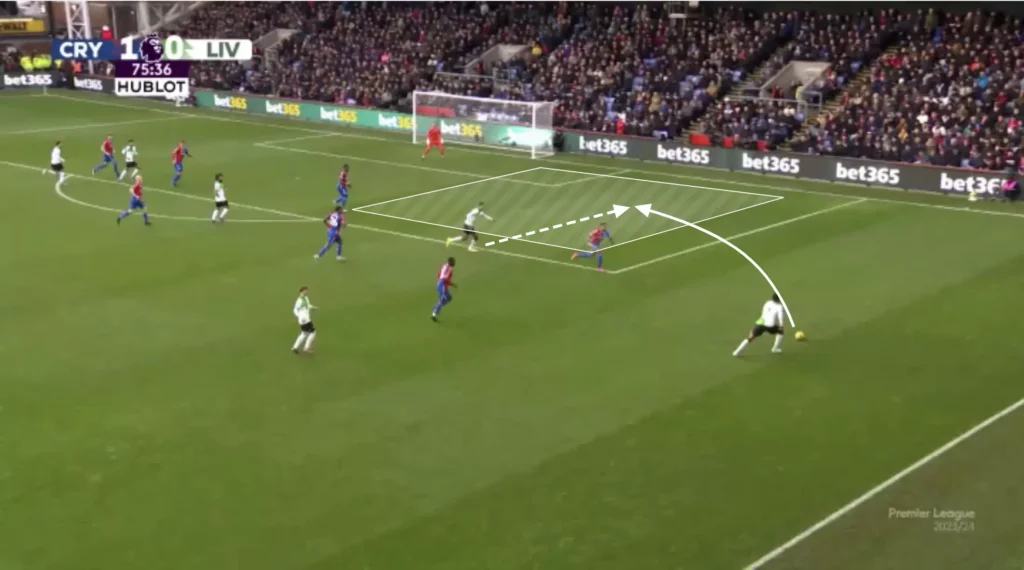
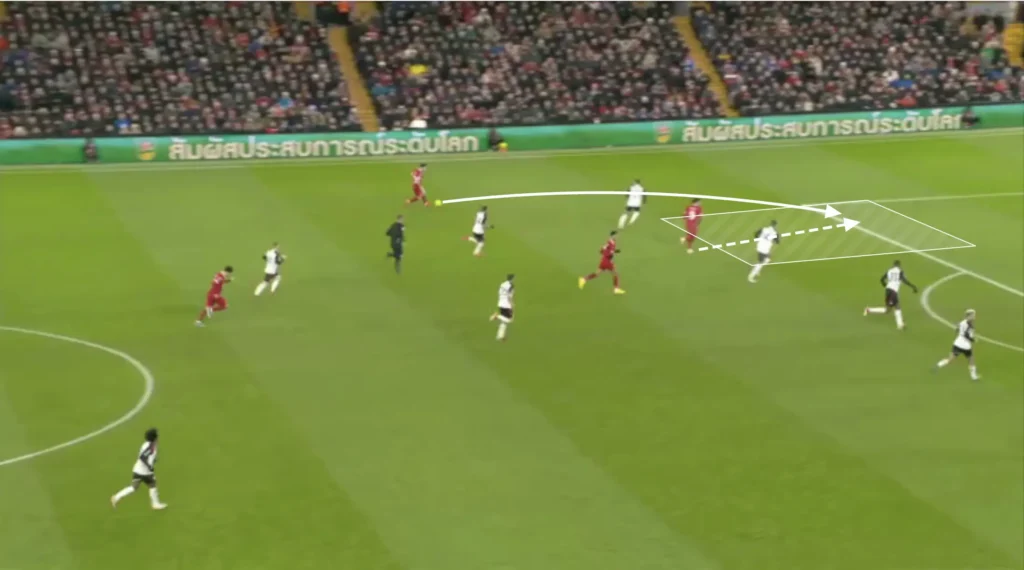
The opposition defending midfielder, who is responsible for the Liverpool attacking midfielder, often struggles to track the run, which forces the center-back to make a decision. If he goes to track the run, he leaves a massive space in the box for the striker to exploit. Therefore, many center-backs will stay in the center, allowing the winger to play the ball into the open space to the free underlapping player, who can turn and find a cross to a teammate.
The winger, however, does not have to play the ball to the underlapping player. The underlapping player will often drag away a defensive midfielder, which opens the space inside. The winger can take the ball inside and shoot or find a pass to a free player in front of the backline.
Overlaps
Liverpool also uses the overlap to produce opportunities in the final third. When the winger gets the ball, a Liverpool player quickly makes the overlap, creating a 2v1 on the wing. If the opposition fullback drops to cover the overlapping run, the winger could cut inside, taking a shot or combining with a midfielder. If the fullback covers the center, the ball can easily be played to the overlapping player, creating a crossing opportunity.
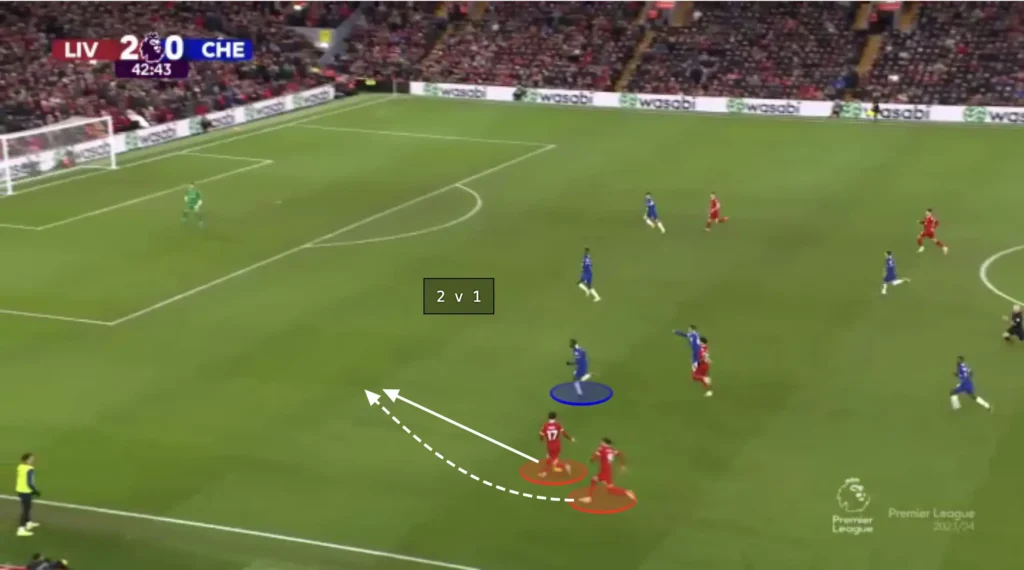
Many Players in the Box
The attacking midfielders also look to make runs into the box when the ball is in the final third, often getting four or five players into these areas to create overloads. The numerical advantages in the box force the defending team to make decisions and leave some players open.
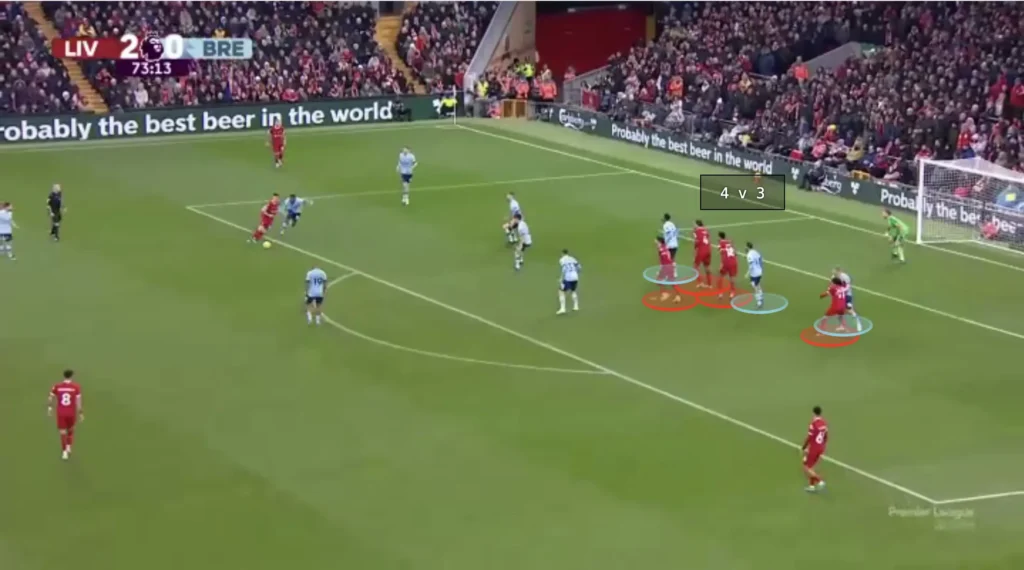
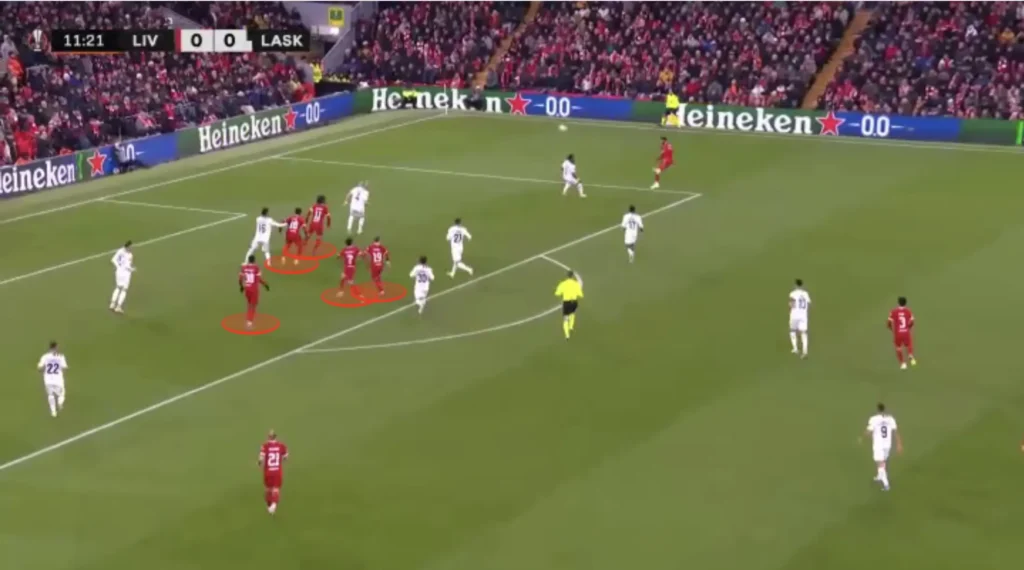
Jürgen Klopp also positions many Liverpool players outside the box, ready for the second balls and cut-backs. Having players in these areas allows Liverpool to win the ball back after crosses, enabling them to recycle the ball and create new opportunities.
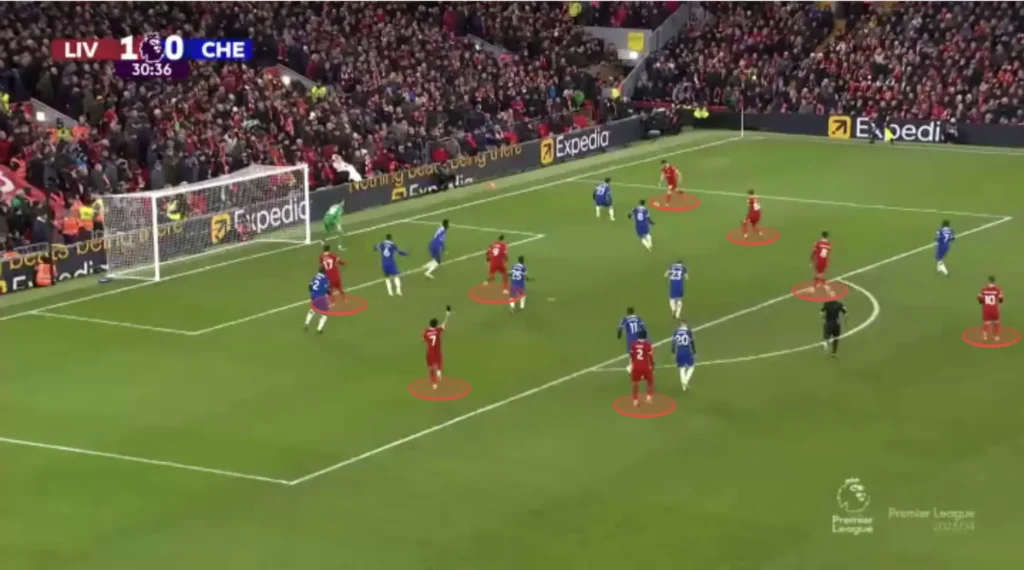
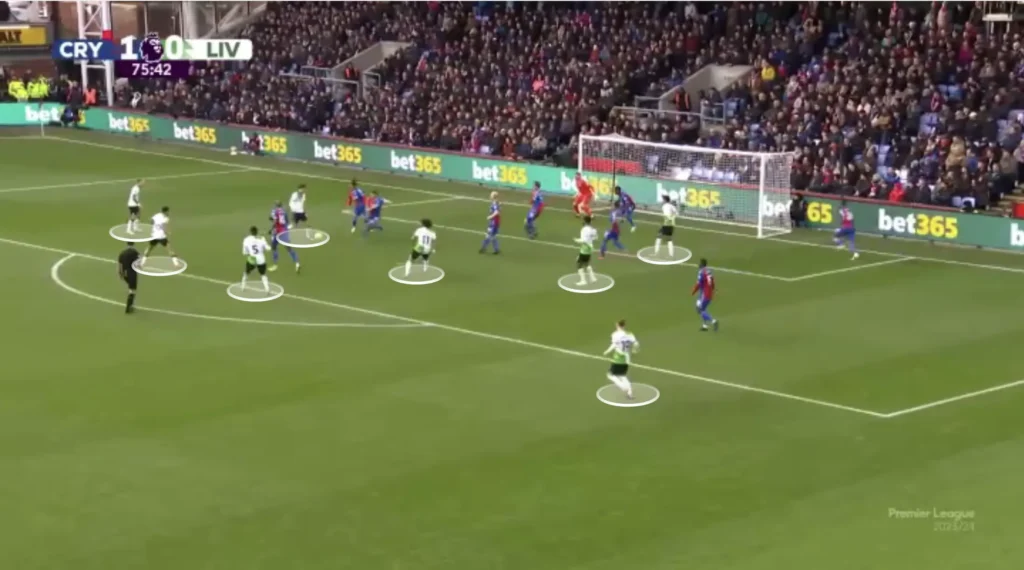
Liverpool always succeed in pushing down the opposition’s defense, which opens the space in front of the backline. They often find players like Szoboszlai or Mac Allister in these spaces who can use their amazing long shots or combine with an attacker to create goalscoring opportunities.

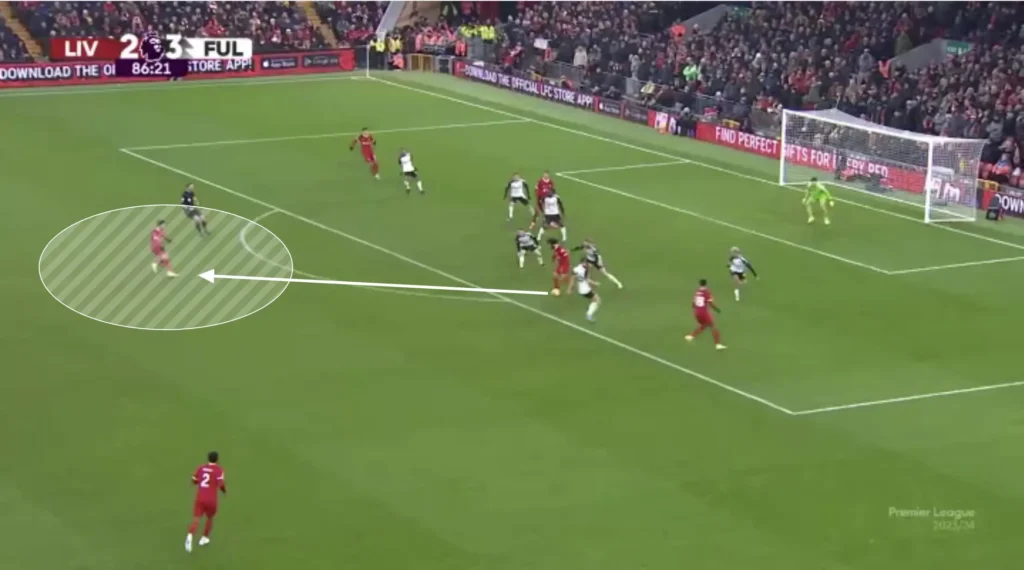
Defending
High Energy and Work Rate
Jürgen Klopp’s Liverpool is renowned for its high energy and relentless work rate on the pitch, which has become a defining characteristic of his coaching philosophy. Klopp instills in his players a mentality of pressing and intensity from the moment they step onto the field. His tactical approach emphasizes gegenpressing, a strategy focused on immediately winning back possession after losing the ball. This high-octane style of play requires exceptional physical fitness and mental discipline from the players. Liverpool’s ability to maintain such a demanding tempo throughout matches puts immense pressure on opponents and often disrupts their rhythm. Klopp’s emphasis on collective effort and tireless running has led to success on the field while endearing his team to fans worldwide for their thrilling, high-energy performances.
High Press
Jürgen Klopp places much value in being aggressive without the ball. This shows in Liverpool’s high pressure. Klopp usually wants his team to go man-to-man and intensely press the opposition. They almost use their high press as an attacking threat, scoring many goals from winning the ball high up the pitch.
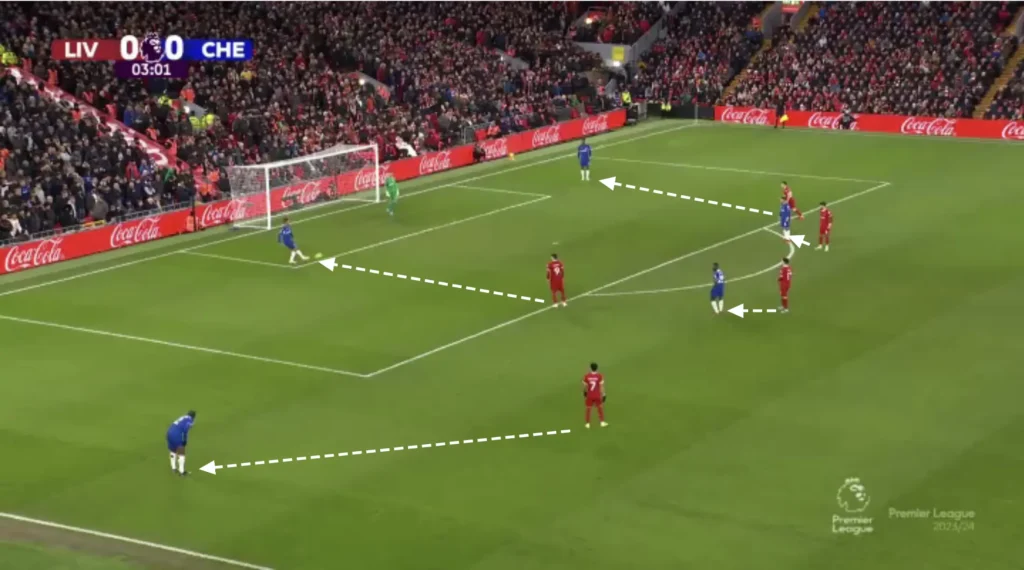
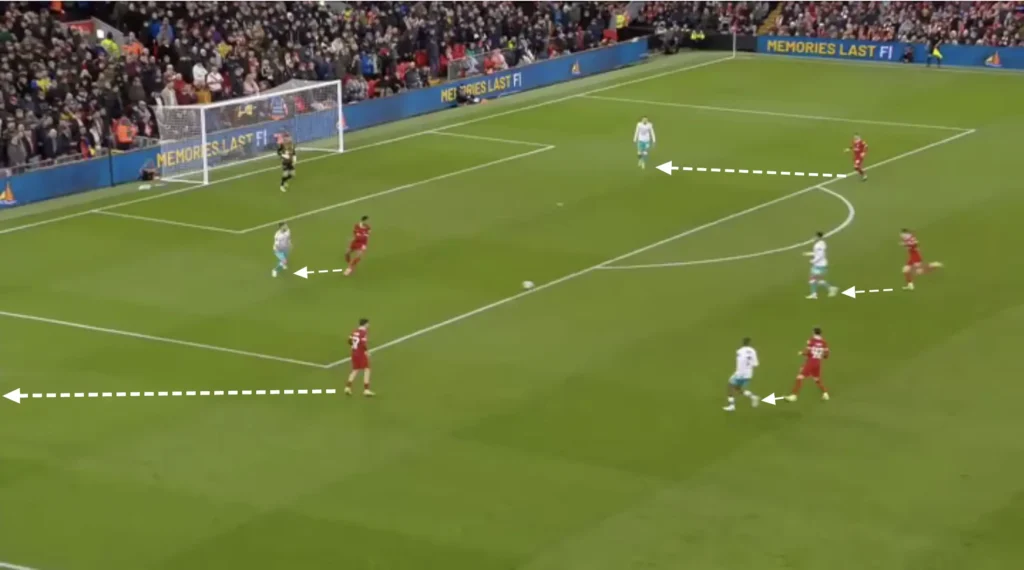
Against back-fours, they need to rotate to get into the man-to-man system. They usually do this by pushing the right-winger up on a center-back, the right-back to the opposition’s left-back, and the right center-back to the opposition winger.
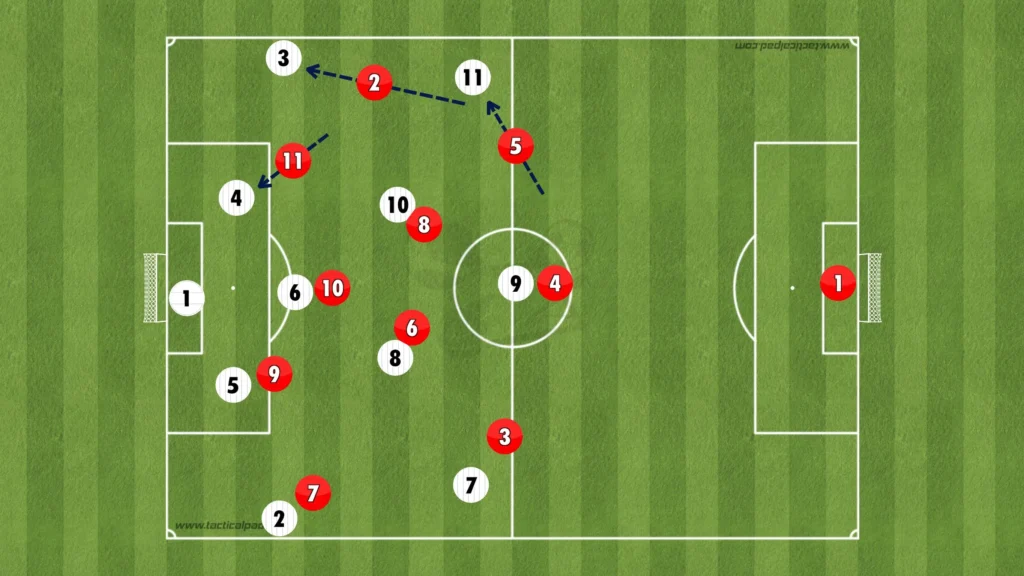
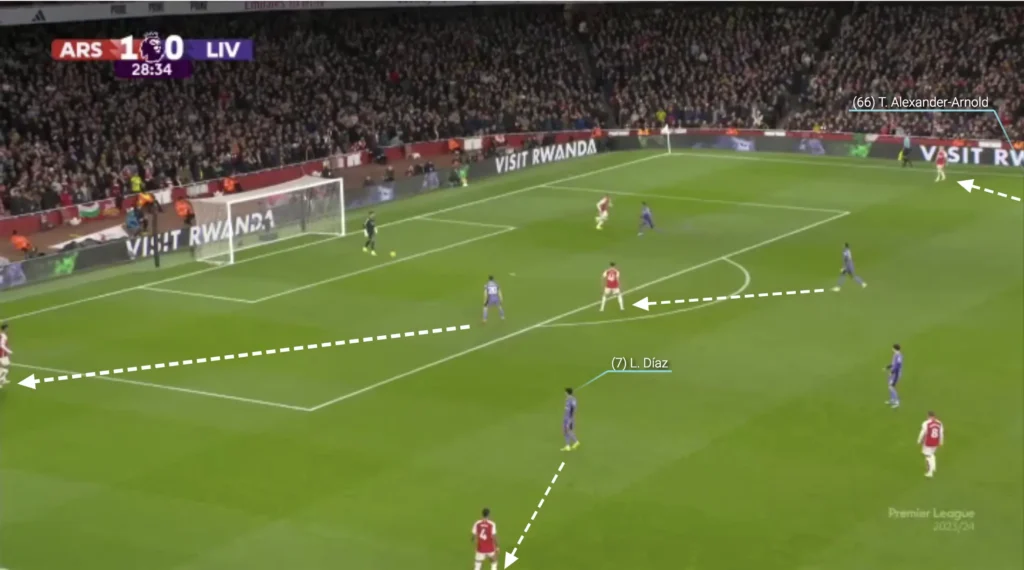
Low Press
In the low press, Jürgen Klopp’s Liverpool uses a 1-4-1-4-1 formation. They look to set up in a mid-block, always trying to close the center, forcing the opposition out wide.
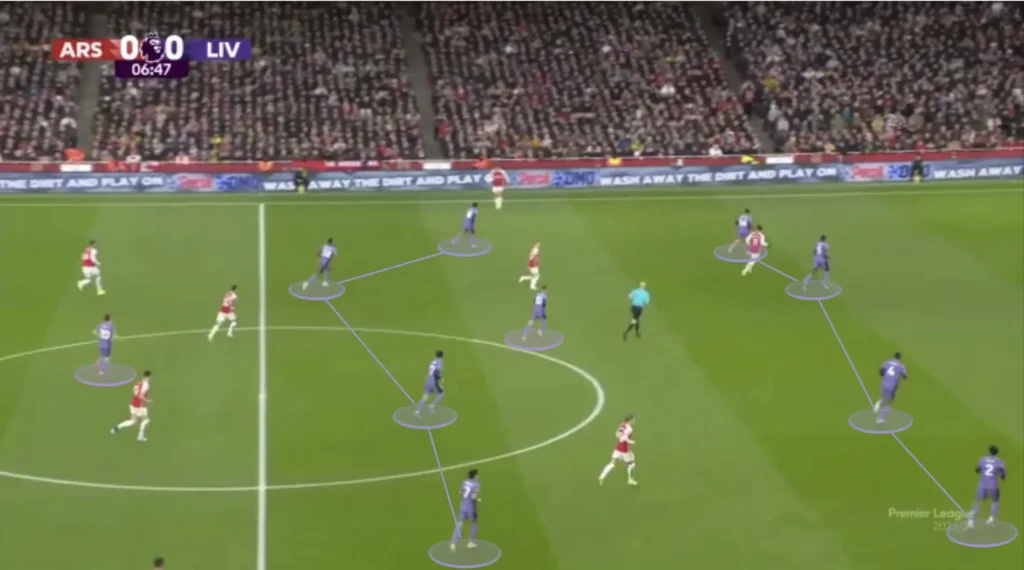
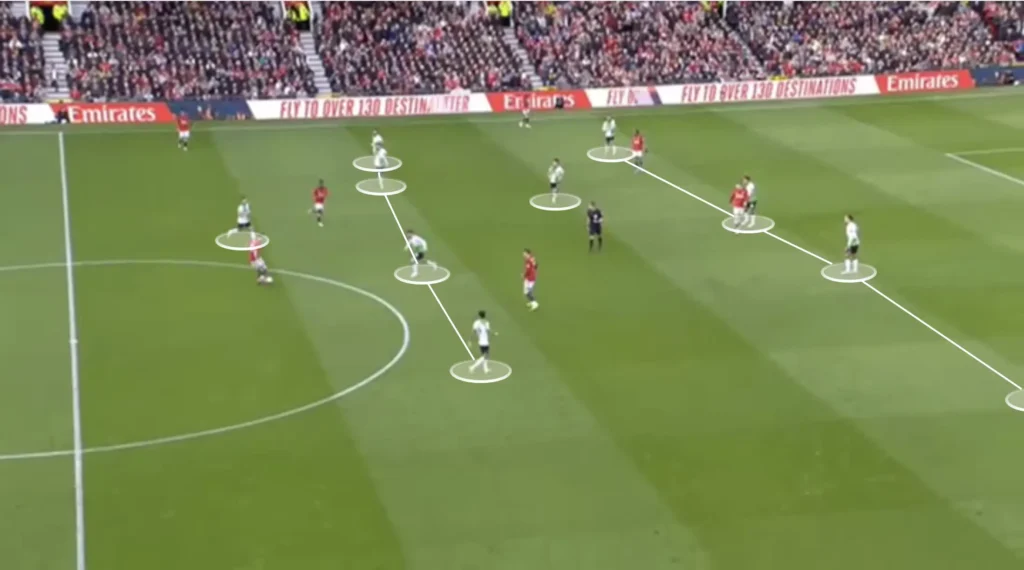
Liverpool looks to squeeze the pitch when defending. This means constantly pushing the team up as much as possible. Every time the opponent plays a slow, sideways pass or a back pass, Liverpool’s first line of pressure pushes up, with the rest of the team following to stay compact. When the next pass comes, they push up even more, forcing the opponent back even more. They do this because it pushes the opponent further away from Liverpool’s goal, making it harder to create chances.
Squeezing the pitch sometimes allows them to go from their low press into their high press. When this happens, the right-sided players push up, creating the man-to-man system like in the high press.
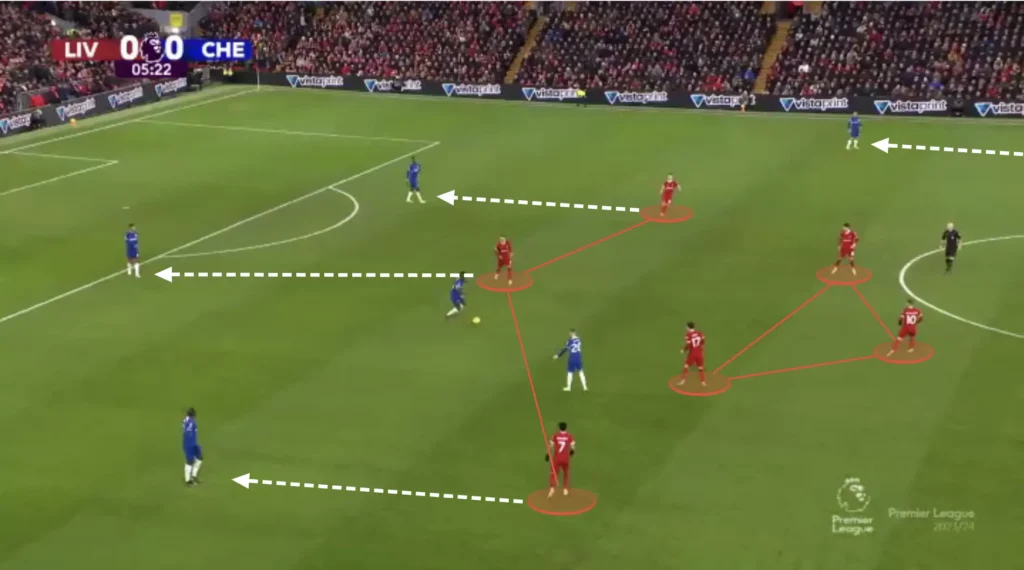
Transitions
Defensive Transitions (Gegenpressing)
Positioning many players centrally, creating a numerical advantage in the midfield, creates good conditions in defensive transitions. Many players close to the ball after losing possession means that many players can work towards regaining possession.
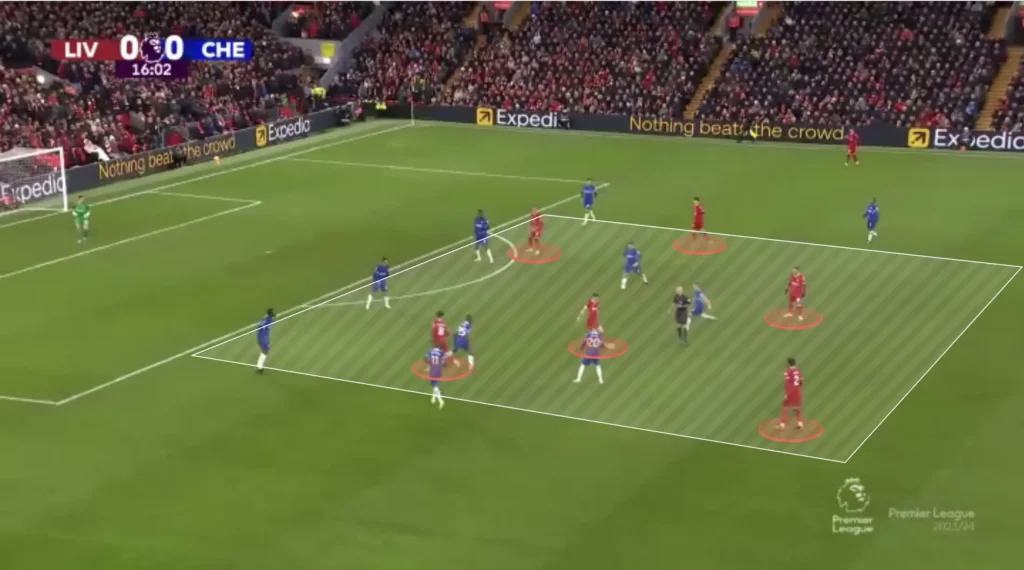
Jürgen Klopp has installed a mentality in this Liverpool team where they have a high energy, an incredible work rate, and a constant desire to press the opposition. Therefore, Liverpool often successfully regains possession directly after losing it through counterpressing the opposition.
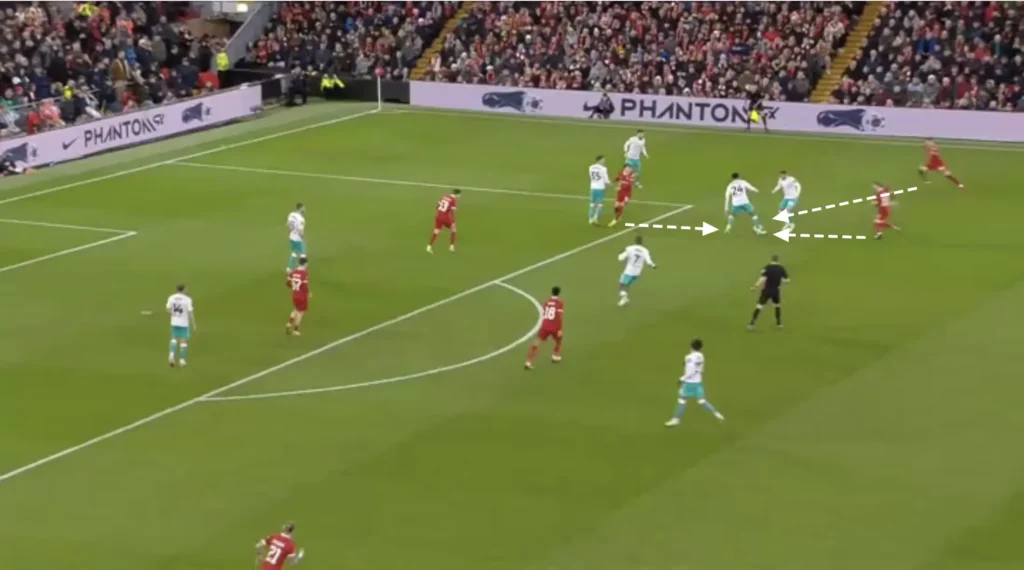
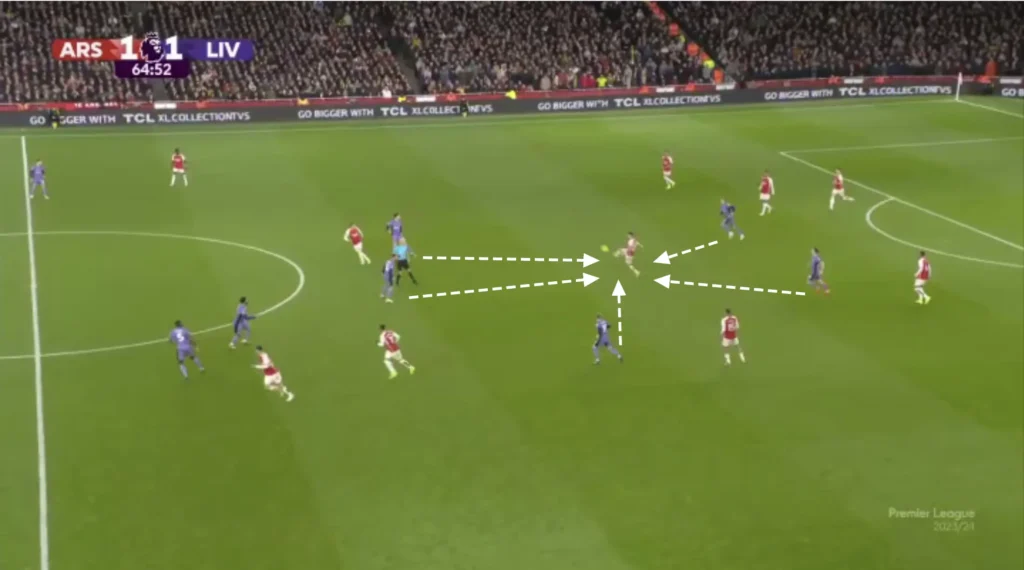
Offensive Transiitions
Jürgen Klopp also wants his team to counterattack in their offensive transitions. They do this with a high tempo, often attacking the spaces between the center-backs and fullbacks. Their high energy and quick forwards make Liverpool deadly in the counterattacks, which has become one of their greatest assets. In addition, keeping many players centrally while defending enables them to incorporate more players into the counterattacks.
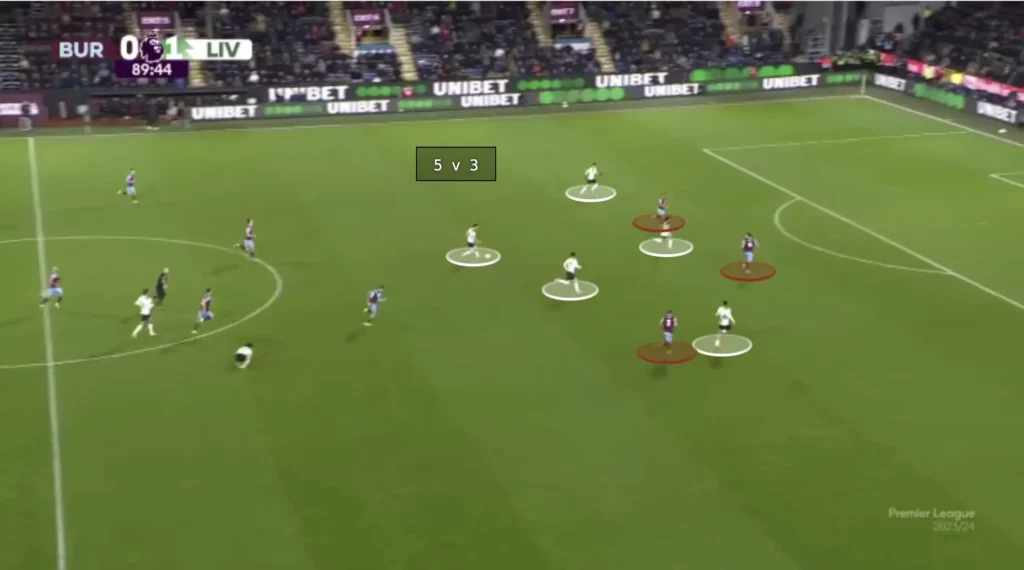
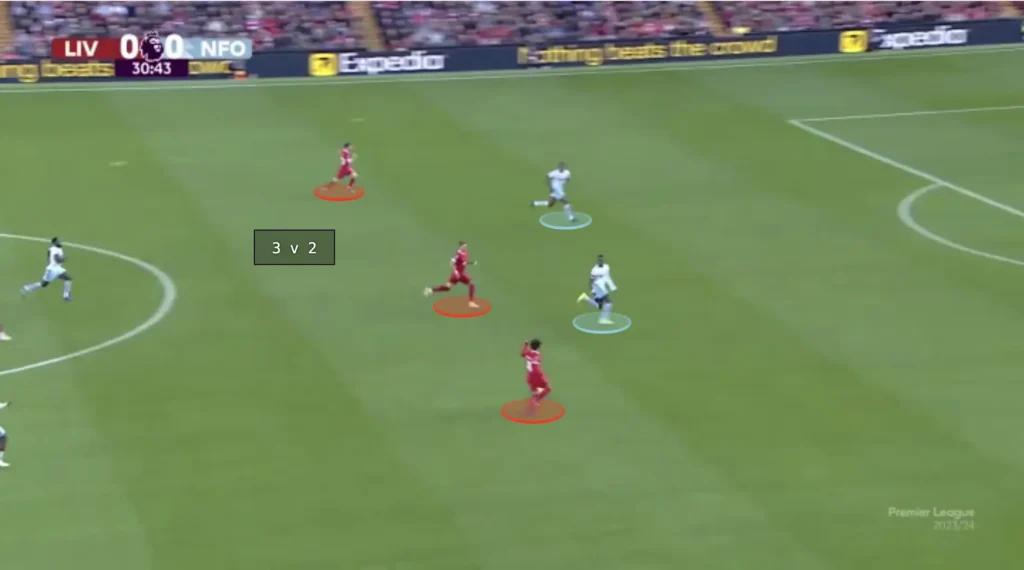
Final Thoughts
In conclusion, this tactical analysis has provided a deep dive into the innovative strategies employed by Jürgen Klopp at Liverpool Football Club. Klopp’s tactical philosophy, characterized by high-intensity pressing, fluid attacking movements, and defensive solidity, has been instrumental in Liverpool’s success on the domestic and European stage. Through meticulous organization and strategic adaptability, Klopp has crafted a cohesive and formidable unit that consistently challenges for top honors. As we’ve explored the nuances of Klopp’s tactics, it becomes evident that his approach transcends mere formations and tactics, embodying a holistic vision emphasizing teamwork, resilience, and relentless pursuit of excellence. With Klopp at the helm, Liverpool has changed the standard for modern football, leaving an indelible mark on the sport’s tactical landscape.
